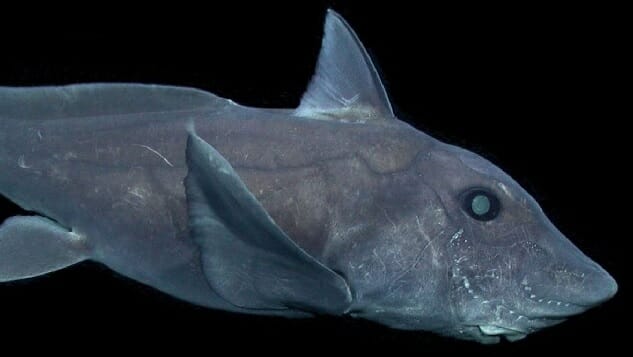Ghost Shark Prompts Questions About Deep Sea Exploration

Off the coasts of California and Hawaii, scientists recorded the ghost shark, also known as the pointy-nosed blue chimera, in its natural habitat for the first time.
The ghost shark is a strange deep-sea creature—the video shows its blank eyes, large and flexible fins, and dotted heads. The fish, a distant relative of the shark and considered to be a living fossil, has other unusual features, including a retractable sex organ located on the head of males and flat tooth plates instead of teeth. Also known as Ray Troll’s chimera, named after an Alaskan artist whose images often feature the alien-looking fish, the Hydrolagus trolli lives at crushing depths up to 6,500 feet below the ocean’s surface.
Although the video was taken in 2009, it was just released to the public by the Monterey Bay Aquarium Research Institute (MBARI). Previously, the ghost shark had only been found near Australia, New Zealand, and New Caledonia.
“The interesting thing about this particular finding is that the fish has been observed in the Northern Hemisphere, a long way from the place where it was originally described,” said Dominique Didier, the ichthyologist who first identified Hydrolagus trolli as a new species in 2002.
This could mean the ghost shark migrates or is more common than originally thought. MBARI’s video also shows the pointy-nosed blue chimaera near a rocky seafloor, which could point to the fish’s preferred habitat. In previous findings, pointy-nosed blue chimeras were typically observed on sedimented seafloor.
Another possibility is that the fish recorded is a new species.
“We are finding new species of chimaeras—and all kinds of other fish—all the time,” Didier said.
But a new species can’t be proven until a specimen is obtained. Having a specimen of the fish is so important to species identification that the fish in the video is cautiously described as Hydrolagus cf. trolli: the additional “cf.” means that the fish in question should be compared to Hydrolagus trolli, as it might not be the same species.
Joshua Drew, who researches aquatic ecosystems at Columbia University, defined the specimen as the arbiter of whether or not an observed species is a new species.
“This very special specimen, called the ‘holotype,’ is the representation of that organism, and we compare it to all the other kinds of things that it might be,” he said. “When we don’t have a specimen in hand, we have to make do with what we have.”
Even if the Hydrolagus cf. trolli isn’t a new species, it still gives scientists plenty of new information—and new questions to ask. Didier pointed out that although the search for chimaeras doesn’t drive research, new information can be found when research is conducted for other purposes, such as during pipeline and geological surveys or when checking an area’s biodiversity.
-

-

-

-

-

-

-

-

-

-

-

-

-

-

-

-

-

-

-

-

-

-

-

-

-

-

-

-

-

-

-

-

-

-

-

-

-

-

-

-








































